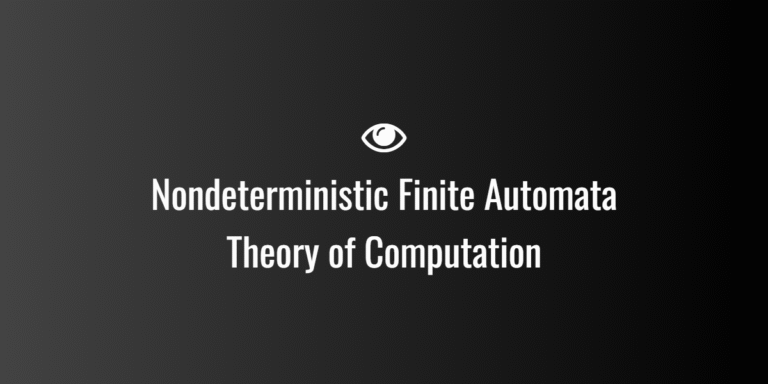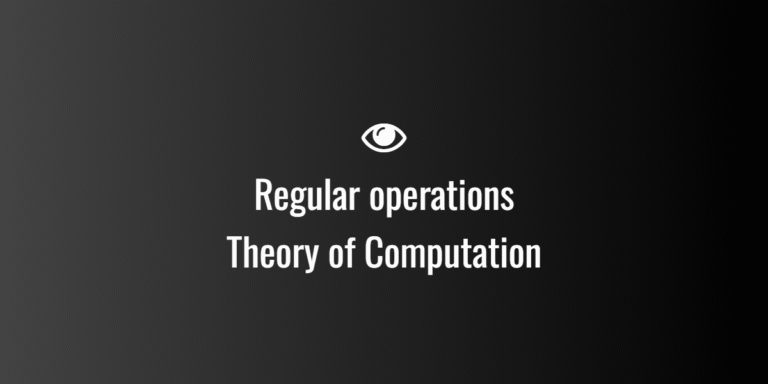
Closure Under the Regular Operations
⭐ Why “closure” matters
Closure tells us what we can build using regular languages.
If you know regular languages are closed under union or concatenation, you become confident that:
- If L₁ and L₂ are regular,
- Then you can combine them in many ways
- And the result will still be regular.
This makes our life easy when designing or proving things in Theory of Computation.
⭐ The Regular Operations (in plain English)
Here are the common operations regular languages are closed under:
1️⃣ Union (L₁ ∪ L₂)
You combine all strings from the first language and the second language.
Like mixing two playlists together.
2️⃣ Concatenation (L₁L₂)
You take a string from the first language and place it right before a string from the second language.
Example:
If L₁ gives you “hi” and L₂ gives you “there”,
then L₁L₂ gives “hithere”.
3️⃣ Kleene Star (L*)
Repeat a language any number of times — even zero times.
If L = {“a”}, then L* gives:
{ε, “a”, “aa”, “aaa”, … }
It’s like a loop that can run again and again.
4️⃣ Intersection (L₁ ∩ L₂)
Take only the strings that belong to both languages.
5️⃣ Complement (L̅)
Flip the membership:
If a string was in the language, remove it.
If it wasn’t, include it.
6️⃣ Difference (L₁ − L₂)
Take strings from L₁ but remove the ones that also appear in L₂.
⭐ Why are regular languages closed under these operations?
Because we can build machines (like DFAs/NFAs) that perform these operations too.
For example:
- To handle union, we can build an NFA that chooses whether to start in DFA₁ or DFA₂.
- To handle concatenation, we connect one machine to the other.
- For Kleene star, we add paths that allow the machine to loop back and repeat.
- For intersection, we run two DFAs together in parallel using the product construction.
- For complement, we flip the accepting and non-accepting states of a DFA.
All these constructions stay within the world of finite automata —
so the results stay regular.
⭐ Simple Visual Diagram
(Conceptual, not overly formal)
Suppose we have two regular languages:
L₁ and L₂
L₁: {strings recognized by Machine A}
L₂: {strings recognized by Machine B}Now we apply regular operations:
+-------------------+
| Union |
| L₁ ∪ L₂ |
+-------------------+
|
v
Still Regular +-------------------+
| Concatenation |
| L₁L₂ |
+-------------------+
|
v
Still Regular +-------------------+
| Kleene Star |
| L₁* |
+-------------------+
|
v
Still Regular +-------------------+
| Intersection |
| L₁ ∩ L₂ |
+-------------------+
|
v
Still Regular +-------------------+
| Complement |
| L̅₁ |
+-------------------+
|
v
Still RegularEverything stays inside the “regular languages” box.
⭐ A Small Real-Life Analogy
Imagine regular languages are like LEGO blocks.
You can:
- stick them together (concatenation)
- mix sets of blocks (union)
- filter only matching pieces (intersection)
- build loops (Kleene star)
No matter how creative you get, you never break the LEGO rule —
you always end up with another LEGO creation.
Regular languages behave the same way.



